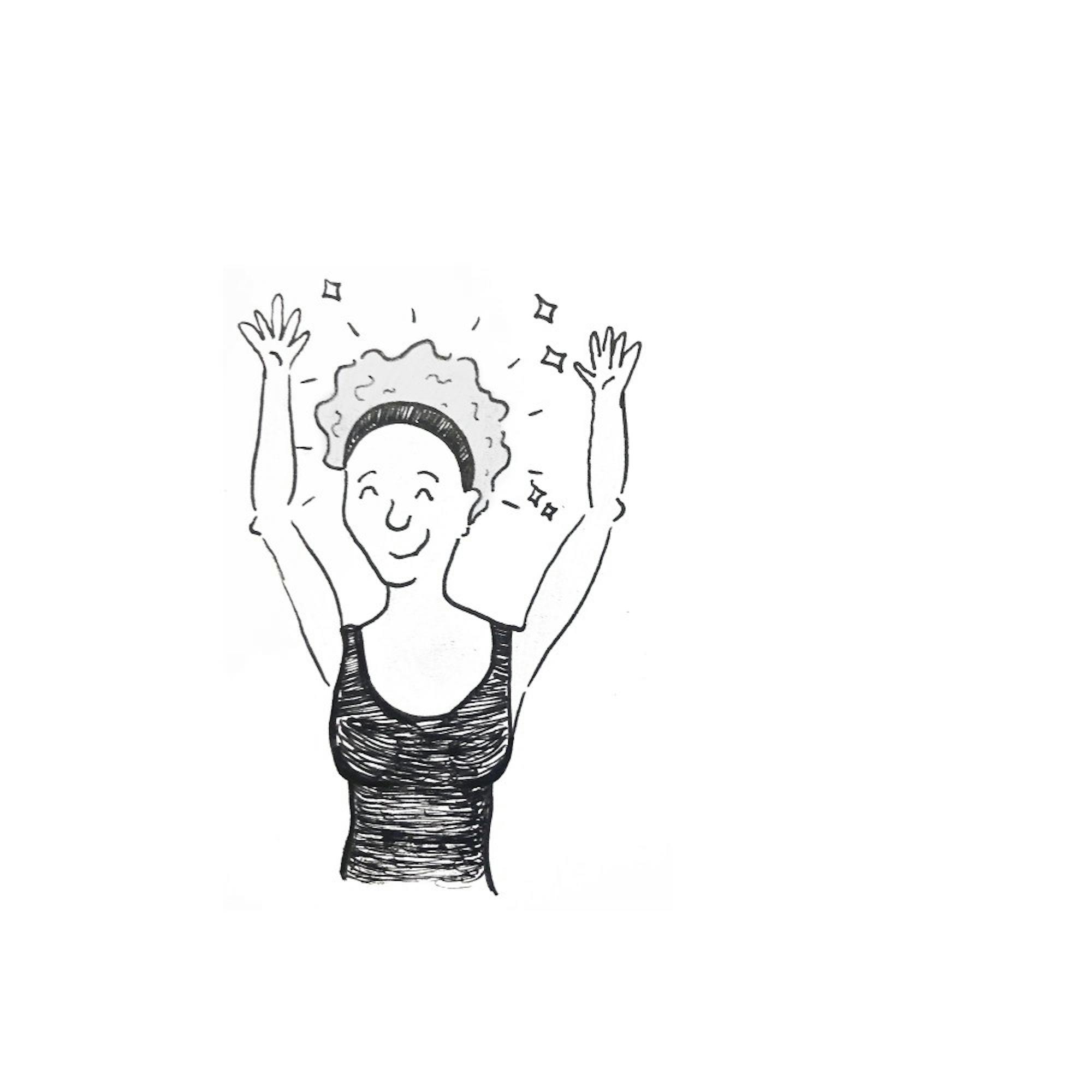Over the last few years, young women around the world have been sporting a bold new hairstyle: bright, eye-catching silver locks. While platinum blonde has always been high in demand, this contemporary look deviates from the norm, blending cool tones like gray, blue and purple instead of traditional warm blonde and brunette hues; this avant-garde twist of tones produces a unique chic shade that closely mirrors a woman’s natural graying of her hair.
With high-profile celebrities like Kim Kardashian, Winnie Harlow, Cardi B and Iskra Lawrence transforming their natural hair into a sensational silver chrome, young people everywhere have been quick to jump on the trend. This past year, over 10,000 people in the United Kingdom alone searched for “grey hair dye” online each month, and many a prominent publication — including those such as Cosmopolitan, Glamour and Allure — has dubbed this “icy” hair trend the biggest to watch out for in 2019.
Although I do agree that this up-and-coming trend is definitely gorgeous, I must admit that I did wonder, why gray? In modern society, which has always esteemed youthful beauty, I personally feel that women are constantly seeking to make themselves appear younger, whether that means investing in periodic botox injections, slathering on eye cream every night before bed or, of course, dyeing their hair to mask any pesky gray hairs.
So if older women — perhaps those long out of their childbearing years — are so adamant about maintaining the youthful glow of their 20-year-old selves by hiding their emerging gray hairs, why is it that 21st-century youth challenge these established aging norms, seeking our hairstyles that serve as such a stark contrast from the rest of their youthful aura?
Women’s, gender and sexuality studies professor Graziella Parati shared some wise insight into the rising hype of dyed silver hair, speaking both from her observations of American and Western European fashion trends and from her personal experience of dyeing her own hair. Parati, who first started getting gray hairs around the age of 35, dyed her hair blonde for over 20 years before she finally decided to let her hair stay its natural gray. She then decided to dye just her bangs with bolder blue and purple tones, sharing that this decision served as both a powerful statement of her identity and a manner through which she could reckon with her evolving self-perception.
“I tend to be ridiculously pale, so having white and gray hairs next to my pale face made me feel like Casper the Ghost, which is not something I was comfortable with,” Parati said. “I think some blue and purple colors around my face made me feel more comfortable, but also allowed me to express my lively, extravagant personality.”
Parati also commented on the interestingly stark contrast in stigma that exists regarding a woman’s decision to let her hair go gray versus a man’s. According to Parati, this gender discrepancy is perpetuated because of the very different value attached to the aesthetic judgments of females versus males.
“After a certain age, women become completely invisible, and they are treated like second-class citizens because they don’t have the attractiveness they had when they were younger,” Parati said. “On the other hand, men with gray hair don’t automatically get placed into a category of old, uninteresting or marginalized people. Instead, there is a sort of charm that comes with aging or mature men.”
Finally, Parati also spoke of the emerging silver hair trend among younger generations, particularly today’s millennials. She shared that although it likely would not be seen as stylish for an older woman to sport a dyed monochromatic silver look, the dichotomy between a young person’s face and body and her “older hair” provides a fascinating juxtaposition that has captivated modern youth.
“Gray is a very elegant color, and if you have a young, unwrinkled face, what you see is a very charming and interesting contrast that doesn’t have the same effect as when an old person with wrinkles on the skin has gray hair,” Parati said. “So while gray hair looks like an interesting experiment for younger people, it means something completely different and looks completely different for an older person to have gray hair.”
Upon speaking with Parati, I personally found her hypotheses regarding the prominence of the silver hair trend pretty compelling. It makes sense that performing a bold fashion change might involve manipulating — or empowering, depending on your own intention — a marginalized group of people in society; it’s a trend we learned about in Professor Parati’s class Comparative Literature 42.01, “Prada, Chanel, Ferrari: History and Literature” that can be found all throughout the fashion industry today and throughout the industry’s history.
While I would personally never dye my hair silver (or so I think right now), I think the bold silver tones provide a super stylish trend worth incorporating into my wardrobe in other ways. Since, as Parati mentioned, silver and gray are very chic colors that mesh well with a variety of looks, I will most definitely be hopping on this trend’s bandwagon one way or another, perhaps incorporating more muted gray or dazzling silver colors into my daily style. Furthermore, I choose to stand in solidarity with aging women, challenging the stigma of letting one’s hair go gray and celebrating the healthy and honest aging of women by embracing this trend of modern youth.
Regardless of my own view of the silver hair trend, though, it’s one that we don’t anticipate going away anytime soon, so definitely keep an eye out for more big players in the entertainment industry — and maybe even your own friends and family — jumping on this hot trend.




